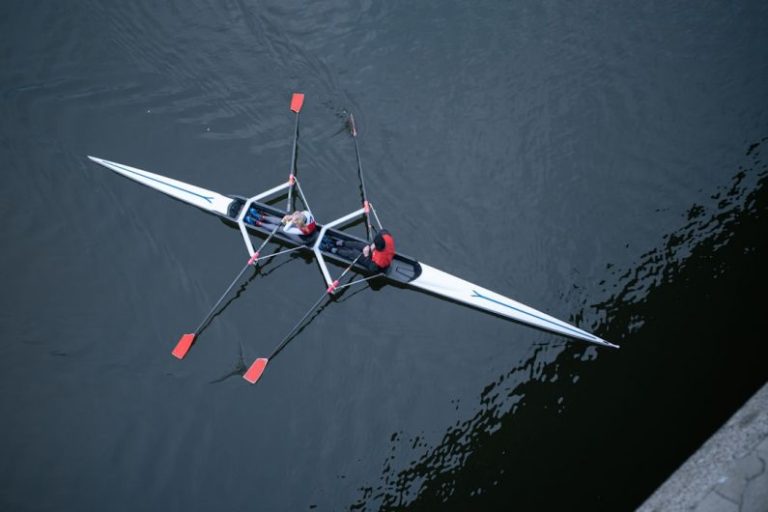
Rowing is a demanding physical activity that engages multiple muscle groups, making it essential to prioritize recovery to prevent injury and improve performance. Stretching exercises play a crucial role in the recovery process for rowers, aiding in muscle relaxation, flexibility, and overall well-being. By incorporating specific stretching routines into your post-rowing regimen, you can enhance your recovery, reduce muscle soreness, and optimize your training results. In this article, we will explore the best stretching exercises for rowing recovery to help you achieve peak performance.
**Dynamic Stretching**
Dynamic stretching involves moving parts of your body and gradually increasing the range of motion and blood flow to the muscles. This type of stretching is ideal for the pre-rowing warm-up routine and can also be beneficial for post-rowing recovery. Dynamic stretches help to loosen tight muscles and prepare them for the next workout session. Incorporate exercises like leg swings, arm circles, and torso twists to improve flexibility and enhance recovery.
**Hip Flexor Stretch**
Rowing primarily engages the muscles around the hips and lower back, making it crucial to stretch the hip flexors for optimal recovery. The hip flexor stretch involves kneeling on one knee while keeping the other leg bent at a 90-degree angle in front of you. Lean forward slightly to feel the stretch in the front of your hip. Hold this position for 30 seconds on each side to release tension and improve hip flexibility.
**Hamstring Stretch**
The hamstrings are essential muscles used in rowing to generate power and drive the stroke. Stretching the hamstrings post-rowing can help prevent tightness and improve muscle recovery. To perform a hamstring stretch, sit on the floor with one leg extended and the other bent. Lean forward from your hips while keeping your back straight to feel the stretch in the back of your thigh. Hold for 30 seconds on each leg to promote muscle relaxation and enhance flexibility.
**Thoracic Spine Rotation**
The thoracic spine plays a significant role in rowing technique and shoulder mobility. Incorporating thoracic spine rotation stretches into your recovery routine can help alleviate stiffness and improve overall spinal mobility. Sit on the floor with your legs crossed and your hands behind your head. Rotate your upper body to one side, keeping your lower body stable, and hold for 30 seconds before switching to the other side. This stretch can help release tension in the thoracic spine and enhance your rowing performance.
**Chest Opener Stretch**
Rowing often leads to tightness in the chest muscles due to the repetitive forward motion of the arms during the stroke. The chest opener stretch is an effective exercise to counteract this tightness and improve posture. Stand tall with your arms extended behind you and interlace your fingers. Lift your arms slightly while squeezing your shoulder blades together to feel a stretch across your chest. Hold for 30 seconds to release tension and open up the chest muscles for better recovery.
**Calf Stretch**
The calf muscles are essential for providing stability and power during the rowing stroke. Stretching the calves after rowing can help prevent cramping and improve muscle recovery. Stand facing a wall with one foot forward and the other back, keeping both heels on the ground. Lean forward into the wall while bending your front knee to feel the stretch in the calf of the back leg. Hold for 30 seconds on each side to promote muscle relaxation and enhance calf flexibility.
**Mindful Breathing and Relaxation**
In addition to physical stretching exercises, incorporating mindful breathing and relaxation techniques into your post-rowing recovery can help calm the mind and reduce stress. Take a few minutes to sit quietly, focus on your breath, and let go of any tension or distractions. Mindful breathing can help improve oxygen flow to the muscles, promote relaxation, and enhance overall recovery.
**Incorporate Stretching into Your Rowing Routine**
By incorporating these stretching exercises into your post-rowing recovery routine, you can optimize muscle recovery, prevent injury, and improve overall performance on the water. Remember to listen to your body and adjust the intensity of the stretches based on your flexibility and comfort level. Consistent stretching practice can lead to increased flexibility, reduced muscle soreness, and enhanced rowing performance. Prioritize your recovery to ensure you can continue to push your limits and achieve your rowing goals.
**Enhance Your Recovery with Stretching**
In conclusion, stretching exercises are a vital component of rowing recovery that can help improve flexibility, prevent injury, and enhance overall performance. By incorporating dynamic stretches, targeted muscle stretches, and mindful breathing techniques into your post-rowing routine, you can optimize your recovery and maximize your training results. Make stretching a priority in your rowing regimen to support muscle relaxation, improve flexibility, and promote overall well-being. Give your body the care it deserves to excel in your rowing journey.





